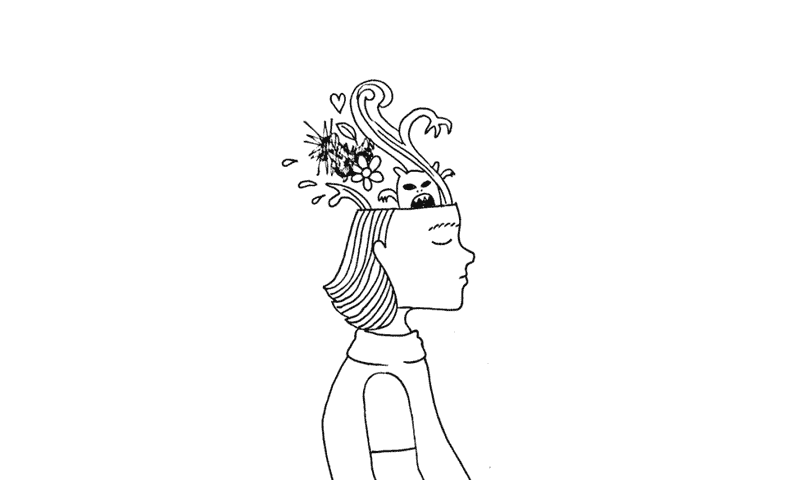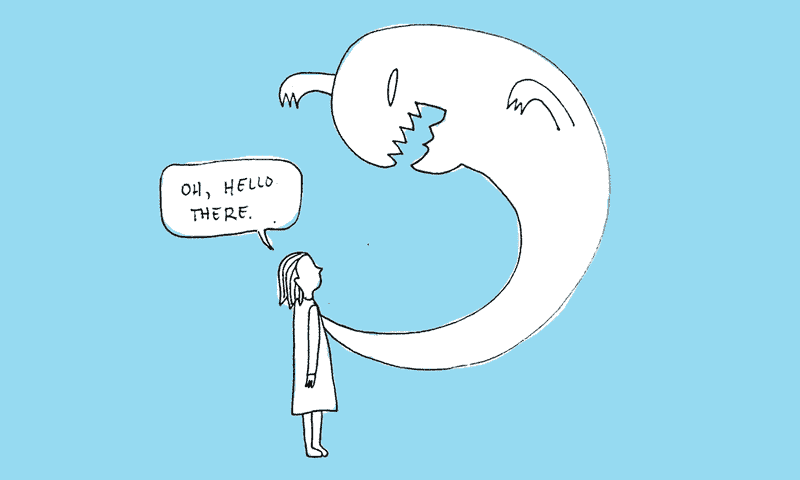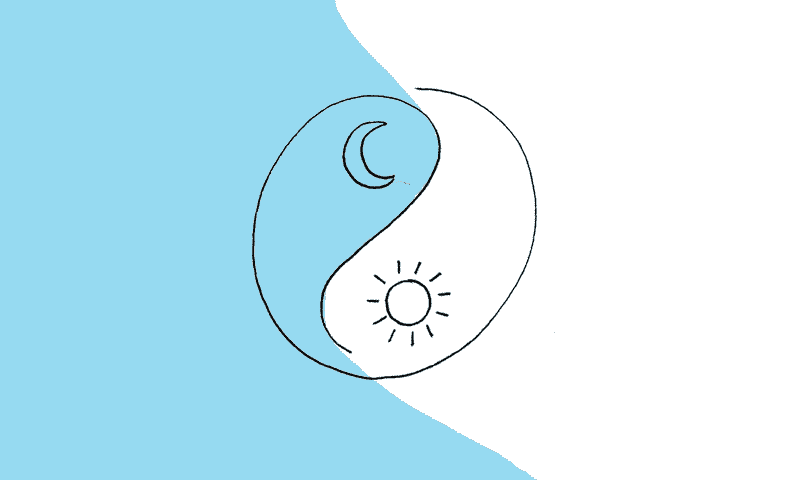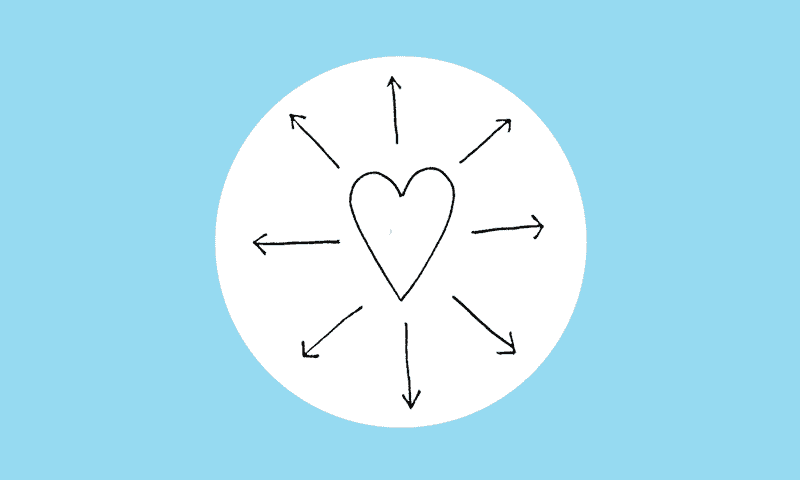A 3-Step Journaling Process To Deal With Anxiety In Challenging Times

No matter who you are, no matter what’s your situation right now, here’s something I want you to know:
It’s okay to feel anxious.
In fact, it’s a perfectly natural reaction to difficulties and to be honest, most people in the world are probably feeling the same way right now.
What’s not healthy, however, is how we deal with anxiety. We usually either suppress it (by numbing it with distractions or pretending that nothing’s wrong), or by letting it consume us and become the only focus of our lives.
Today, I’m here to propose an alternative solution that has saved me in my darkest days numerous times in the past. It’s a three-step journaling exercise, and the premise is very simple: first, you look your anxiety in the eye and make peace with it; then, you change the narrative you tell yourself about it; and finally, you step out of the slump by defining your next simple action.
I am not a doctor, and this won’t replace therapy or medical advice, but it will help you get out of bed in the morning feeling 50% better most of the days. That I can guarantee.
Before we begin, I invite you to switch off your phone, make yourself a hot drink, and get yourself comfortable. Then grab a piece of paper and a pen, and let’s start.
1. Fear Dump

“Rather than letting our negativity get the better of us, we could acknowledge that right now we feel like a piece of shit and not be squeamish about taking a good look. That’s the compassionate thing to do. That’s the brave thing to do. We could smell that piece of shit. We could feel it; what’s its texture, color, and shape?”—Pema Chödrön in When Things Fall Apart
UCLA conducted a study where a few people with a fear of spiders were divided into groups and given different instructions before they had to face a huge tarantula.
One group was told to use neutral terms to describe their feelings about the spider, such as “That little spider can’t hurt me; I’m not afraid of it”. Another group was instructed to say completely unrelated things out loud. The third group was told to say nothing at all, and the fourth group was instructed to simply acknowledge their fear by telling themselves things like “I’m anxious and frightened by the ugly, terrifying spider.”
Surprisingly (or not), it was the fourth group that felt the least afraid when they faced the tarantula.
Sometimes, when we put our fear into words, when we acknowledge our stress, our anger, our frustration, when we face our emotions and look them in the eye, they suddenly appear smaller or even disappear, like those white dust-like dots on the inside of our closed eyelids.
The first exercise in this process is so deceptively simple that it might seem ridiculous, but I encourage you to give it a try. It goes like this:
Open your journal, grab a pen, and write down everything you’re feeling anxious about. Everything. Write how you’re afraid that you’ll run out of money, that you’re too fat to be loved, that you can’t stop being anxious, that people are emptying the supermarket shelves and quarantine will make you crazy, that COVID-19 will not only kill your parents but also eradicate humanity.
Don’t stop writing until your mind is empty. At best, when you’re done, you’ll feel as light as a butterfly, ready to start a nonprofit to help children with cancer, feeling a huge desire to hug your mother and thank her for the wonderful gift that is life.
At worst, you’ll feel a bit shaken, a bit confused, but also like a small weight has been lifted off your shoulders, or like you finally understood something that had been silently nagging at you for years. That’s a good sign: you just took a good, brave look at your anxiety, you broke its spell, and now you’re ready to move on to the next step.
2. Change the Narrative

In the midst of the whole coronavirus madness, one of my students told me a beautiful story.
Despite being a calm and rational person, she had been finding herself in a constant state of fear due to all the panic and anxiety present in her everyday life environment. When she noticed this fear impacting her ability to remain kind and patient towards her children, she decided things had to change.
Recently she had been struggling to find hand sanitizer (all the shops were out of stock), so instead of letting this create more frustration, she turned it into an opportunity. As most kids her age, her children are very much into online gaming, so she created a real life quest for them to pursue as a family: they were to go to town together, each of them with a ten pound bill in their pocket, and the first to find hand sanitizer would be the winner.
The result? Not only did they find hand sanitizer, but she said her children were more excited and communicative than she had seen them in weeks. By the end of our call, she set herself a goal: “Over the next few weeks, I will not give in to fear; instead, I will create my own narrative where my children and I stay united and face the challenge with a positive mindset.”
The way we feel is directly related to the stories we tell ourselves about what happens in the world around us. Therefore, for the second exercise, I invite you to read what you wrote before and build a different narrative around it.
There are numerous ways to do this. You can, for example, for each fear you wrote down, come up with something related that you’re grateful for (“I’m anxious about the economy crashing” could become “I’m grateful for my emergency fund in the bank” or even “I’m grateful to live in a first world country and never having starved”).
Another way would be to look for hidden opportunities or inspiring stories arising from the challenge you’re facing. My student’s story is a perfect example of that, and so are the stories of all the artists that create beauty from pain, all the doctors risking their lives to save patients, the terminal patients whose illness brought purpose to their lives, and everyone who finds joy in helping their neighbor with a favor, a kind word, or a smile.
Get out of the negativity bias and see life for what it is: a beautiful contrast between laughter and challenge, light and darkness. Use your fears as raw material to write your new story—one of empowerment, lucidity, and compassion for yourself and others.
3. Regain Control

One of the biggest causes of anxiety is our annoying tendency to focus on (and obsess about) things that are outside our control. We love hating on politicians, worrying about what others will say, or consuming terrible news about the world that leave us feeling like crap.
The alternative is to start focusing on things we do have control over. This includes how we behave towards others, who we vote for, what we choose to do with our time, and how well we take care of ourselves and our health.
And this brings us to the last part of this exercise: to write down a list of things that you can control, and which can have a positive impact on yourself, your loved ones, or your community. This can include journaling, meditating, exercising, sending a loving message to a friend, donating to your favorite charity, or anything you like. They can be as simple as doing one push up, or as complex as starting a new business.
However, because it can be easy to plan but hard to take action (probably because of our tendency to overcommit) I invite you to add a bonus step to this final exercise: to choose one action among all those and make it your next step. You can use Gary Keller’s focusing question to help you with that: “What is the one thing I can do today, such that by doing it, everything else becomes easier or unnecessary?”
Write down your answer in your journal, and then do it. Just that one thing. And then tomorrow—if you feel like it—repeat this whole process. You will be surprised to find how much motivation, empowerment and happiness there can be in the simple act of following through with something you have committed to, no matter how small.
To sum up
If you’re feeling anxious, start by being okay with it. Anxiety is human, and you’re not broken. It won’t last forever. For now, just acknowledge your anxiety as it is, without judging it. Then, start rewiring the way you see things, and the way you feel will start to change too. And finally, focus on things that are within your control; take it one step at a time, starting today.
Right, this is it. If you try this process, let me know how it goes in the comments—I’d love to hear your thoughts and suggestions.
So much love to you, and remember: this, too, shall pass.